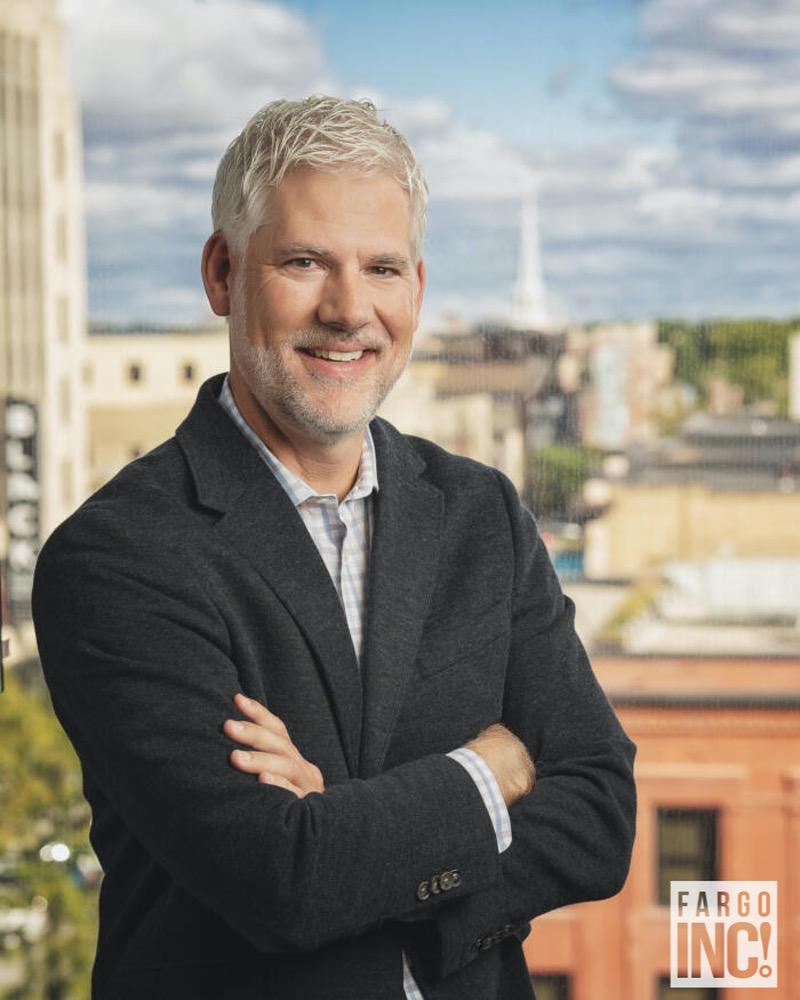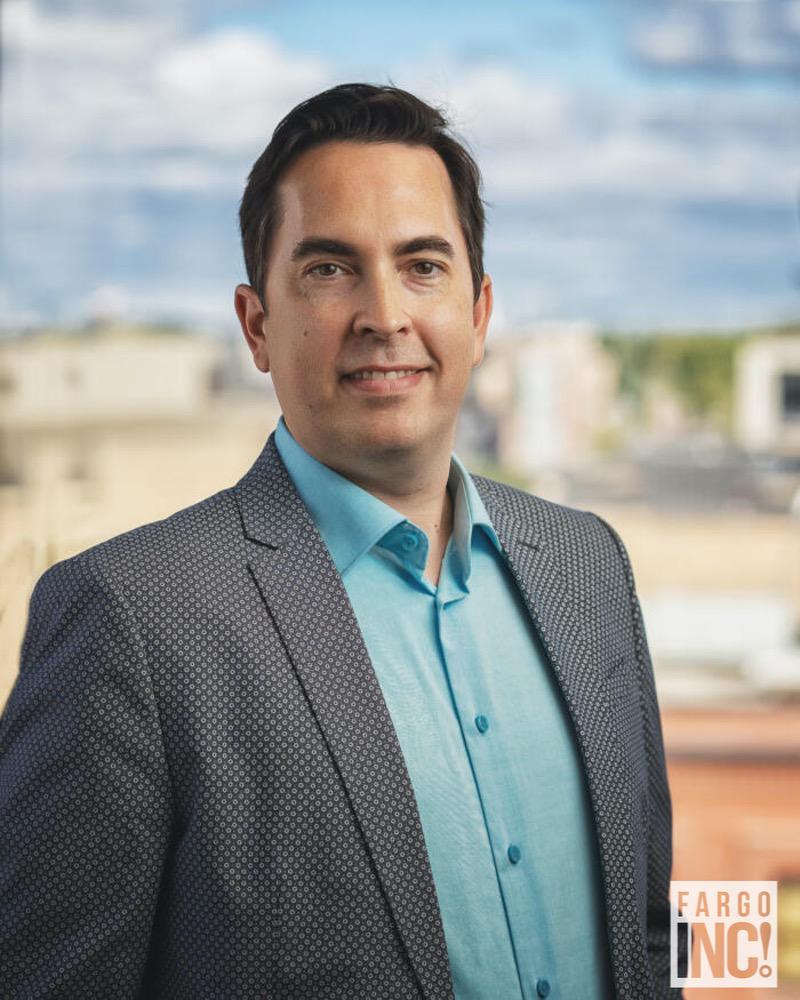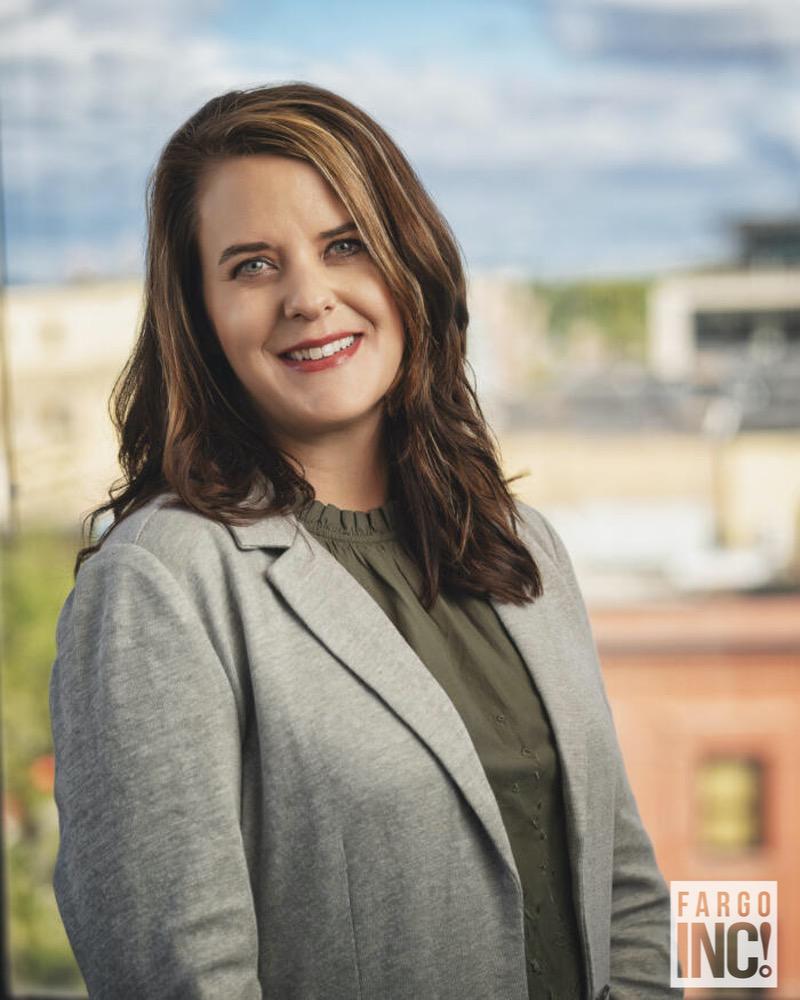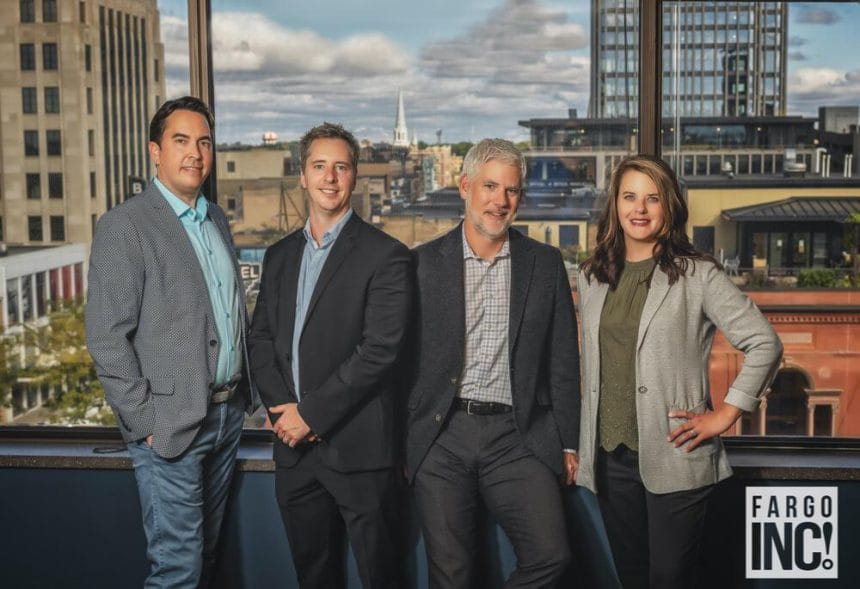What is the primary sector?
The term “primary sector” for many can conjure up thoughts of manufacturing or mining and energy production. However, for the purposes of the Greater Fargo Moorhead Economic Development Corporation, the primary sector is any scalable business in the area that receives a majority of its income from selling goods and services outside the region and around the globe.
As our area’s main organization supporting primary-sector growth, the GFMEDC plays an important role in maintaining and strengthening the economic health of our region. The GFMEDC is charged with attracting outside primary-sector businesses and providing resources for the area’s already established primary-sector businesses to help them thrive.
Between 2014 and 2019, the EDC’s support of 154 primary-sector companies had the following effect in the Fargo-Moorhead economy:
Total sales within the local economy: $2.7B
Total jobs: 5,709
Total payroll: $1.3B
Total capital investment: $459.6M Direct Investment
Total sq./ft.: 1.9M sq./ft. utilized directly by project companies
How do they do it? Funded equally by private investors and local governments, the GFMEDC lives at the crossroads of the political and business world working with elected officials and area businesses to get things done. This encompasses everything from demand-driven workforce development strategies, working with business and education leaders, to supporting our region’s entrepreneurial ecosystem and building strong partnerships for community development and business-focused public policy.
While many from the outside might think that the EDC’s primary role is to find and attract the next big company to relocate to the area, this is, most often, not the case. As the GFMEDC’s President and CEO Joe Raso likes to put it, “It’s less about elephant hunting and more about doing the simple blocking and tackling. Ten percent of what we do is attracting those new businesses to our area; however, 90 percent of what we do is trying to enhance what’s already here by supporting existing industry or helping those already here to create new enterprises.”
Golden Path Solutions, a relatively new startup in Fargo, is one of those companies that’s already here. GPS is working to create an ecosystem where schools, employers, and students work much more deliberately to prepare for the future, and they are familiar with the GFMEDC’s impact first-hand.
“We have been supported by the EDC in so many ways, whether it be introductions to potential customers, feedback on our business model, or connections to influencers for feedback and networking,” said Golden Path Solutions Founder and CEO Patrick Mineer. “We recently received a micro loan through their Growth Initiative Fund that helped us start to do more marketing and outreach to schools and employers, and we are so appreciative of their support and investment in area businesses.”
Although the EDC helps countless businesses like GPS directly by connecting them to financial help, the majority of their impact goes unheralded with the organization serving as a liaison between the entrepreneur and various organizations. We at Fargo INC think the GFMEDC and its employees deserve more attention, so, let’s take a look at four of their outward facing members making a huge impact.
Joe Raso, President & CEO

Joe Raso got his first job in economic development in 1994 at the University of Northern Iowa while completing a Master’s program in Public Policy. Since then, Raso has been the Director of the Cedar Falls Iowa Main Street Program; Executive Director of Delaware County Iowa Economic Development; President and CEO of Iowa City Area Development Group; President and CEO of Colorado Springs Regional Business Alliance (merged Chamber and EDC); and President of a private consulting firm called Blane, Canada Ltd.
Raso saw a great opportunity to join the GFMEDC in 2018 as the President and CEO. Raso noted that there were numerous factors that made the Fargo Moorhead region and the organization such a good fit for him:
“It was really a combination of things, which included:”
- An organization that had already shown the importance of strategic workforce development, entrepreneurship and ecosystem building that goes hand-in-hand with existing industry and targeted recruitment programming
- The leadership had already shown a strong commitment to the financial support of the organization to allow us to develop new programming to build off of the foundation already created
- Very strong companies across growth industries, and new and upcoming sectors such as autonomous systems, which I was familiar with from my work in Iowa and Colorado
- Coming back to the Midwest and the strong work ethic and commitment to doing the right things and supporting one another
- I loved the idea of working in a market that includes two states, which provides multiple options for people and companies wanting to be in the region
- At a personal level, I’ve felt a sense of psychological security to bring forward ideas and build a team to implement them and adjust as we learn what is working or not working
- A side bonus to all of this is my partner, Bree, was born and raised in the region so it brings her back to family and friends
As President and CEO, Raso oversees the EDC’s comprehensive approach to economic development to accelerate job and wealth creation in Cass County, North Dakota and Clay County, Minnesota. He says there are a number of things that make this an exciting place to work on economic development, including:
- Community leaders focused on moving initiatives forward to maintain our competitive edge
- The industry sectors have huge growth potential – ag tech, autonomous, software, advanced manufacturing, medical devices/biotech, finance, etc.
- There are strong partnerships among many organizations, public and private, and that bodes well for taking advantage of opportunities
- The continued positive impact of our education system and the asset it continues to be going forward
Even with all of those great things going for the area, Raso says we still have things we can improve on. Raso often thinks about making sure that the FM region sets itself apart in attracting and nurturing independent contractors.
“Nationally, there are 150+ million people in the workforce, and last year I think between 57 million to 60 million received an IRS Form 1099, meaning they did some kind of contract work,” said Raso. “The more we see the growth of the 1099 economy, the more the marketplace has to be attractive to those who want to work independently and for companies who are looking more-and-more to hiring contract workers to stay competitive, creative and keeping long-term costs manageable.”
A Word From Randy Gerhold, GFMEDC Board Chair
I have had the privilege of being on the EDC board for the past eight years. During that time I have seen the EDC focus on many areas important to the region. I have seen us partner with other great organizations, such as Emerging Prairie, Valley Prosperity Partnership, and The Chamber. Our priority is helping and growing our primary sector businesses, but we also have realized the importance of partnering on initiatives that benefit the entire region. Under Joe’s leadership and through the great work of the EDC staff, we have seen a renewed focus on primary sector organizations, building relationships with our investors, and engaging more deeply with the Chamber on initiatives such as Fueling Our Future.
John Machacek, Chief Innovation Officer

“The satisfaction in my job comes from helping people. I like seeing how we use programs to help companies grow more efficiently as well as seeing a connection lead to something else on their paths to success.”
John Machacek started with the GFMEDC in 2003 and later rejoined the organization in 2012 after working as a business banker at U.S. Bank and the VP of Finance & Operations at the United Way of Cass-Clay from 2006-2012.
In his role, Machacek works through both the micro and macro aspects of entrepreneurial development. At the macro level, Machacek works with Emerging Prairie, curates the Startup Digest Fargo, makes connections for entrepreneurs and markets the Fargo Moorhead area as a good place for entrepreneurs. At the micro level, Machacek meets with entrepreneurs to learn their stories, find out what stage the business is currently at, what their current needs are, and how he can help them.
Machacek says his ability to help entrepreneurs is a result of knowing a little bit about a lot of things.
“We are a conduit for a lot of these things,” said Machacek. “There is a large variety of financing, tax and job programs out there, as well as strategic connections. Our job is to listen to the primary-sector companies and be a mechanism to guide them in the right direction.”
On top of Machacek’s main role with the GFMEDC, he also manages their Growth Initiative Fund (GIF), a separate nonprofit that is a supporting organization of the GFMEDC. The GIF is a revolving loan created more than 20 years ago with funding assistance from Cass County, the City of Fargo and the City of West Fargo
GFMEDC’s Progress toward three-year goals (2019-2021) as of September 2020:
- Completed 45 projects towards goal of 85
- Supported company investments of $184M towards $250M capital investment goal
- Companies committed to create 820 jobs towards 1,500 new jobs goal
- Supported company expansions of 836,000 sq./ft. toward 900,000 sq./ft. utilized goal.
Tifanie Gelinske, Sr. Vice President of Workforce Development

Tifanie Gelinske started working with the GFMEDC in 2004 and moved into her workforce development role in 2005. The EDC has focused on workforce development since the late 90’s and Gelinske, with past experience assisting New American’s find employment, was excited to move into the role.
The EDC’s Workforce Development initiatives support primary-sector companies with their workforce needs. “Pre- COVID, our region had a very low unemployment rate and employers struggled to find enough talent with the right skills. Now, during COVID, our unemployment rate is a bit higher at 5.1% (in July 2020), but many employers are continuing to add people to their teams. I support primary-sector companies when they’re trying to attract and retain talent.”
Gelinske says over the years, the GFMEDC has implemented a variety of creative solutions to support workforce recruitment, retention and development aligning with various market changes. However, right now the EDC focuses on four core initiatives to support companies.
1. The GFMEDC offers a research tool called Emsi which helps employers attract talent into the market. If companies are looking for employees with a certain skill set or are trying to market the area to prospective employees, they can give them information on what our market’s demographics looks like.
2. liveinfargo.com – This website helps those who are thinking of coming to the area and those who have recently come to the area get a better sense of what’s going on in the community and ways to get involved.
3. Living Fargo Tour – Pre COVID, Gelinske provided community tours, answering questions and driving a candidate around Fargo Moorhead, showing them things like neighborhood schools, shopping and dining. *Currently the GFMEDC is working to create an online virtual tour.
4. FM Welcome Party – Pre COVID, this in-person party was meant to be a retention tool. Targeted to people new to the area, the event provides information and give people an opportunity to meet providing a sense of connection. “We certainly want the whole community to know that the party is for everyone,” said Gelinske. *Currently the GFMEDC is working on an online format of the FM Welcome Parties to be more COVID friendly.
Gelinske says that in addition to the four core initiatives, the GFMEDC is always willing to be a resource and have conversations to support organizations in other ways.
In addition to her direct work with employers and prospective employees, Gelinske also works with K-12 and Higher Ed to help better align education with the evolving workforce needs of the region’s companies.
Ryan Aasheim, Chief Business Development Officer

Ryan Aasheim started in his role with the GFMEDC in 2019 after working for a small economic development consulting firm called Praxis Strategy Group headquartered in Grand Forks. While there, Aasheim managed special projects focused on promoting emerging technology spaces like unmanned aircraft systems and precision agriculture. At this position, he had the opportunity to meet and work with a number of the GFMEDC team members and prepare himself for his future role.
Once onboard at the GFMEDC, Aasheim began working to learn more about the local area and the approximately 400 primary-sector businesses in Cass and Clay Counties
“When I started in this position, I was familiar with a number of companies in the market already. But certainly, there were a lot of companies I hadn’t met before and wanted to learn more about those that I was less familiar,” said Aasheim. “Connections are extremely important, and an often underestimated part of our work. The more I know about a company’s business and major pain points, the more effective I can be at making meaningful connections to partners, collaborators, and supporters.
Aasheim tries to meet with around 150 of the approximately 400 primary-sector companies per year in person or via technology. After getting to know these businesses, much like Machacek, Aasheim begins looking for a way to help. “It could be something as simple as a snow removal issue, a parking issue or something much more complex like workforce challenges or financing a building expansion.” There are very few limits to what Aasheim and the GFMEDC team will do to try and help the primary-sector businesses they work with.
“We look at economic development as a team sport. We want the EDC, the city and the county to be partners in a business’s growth and expansion,” said Aasheim. “We’re all going to benefit from a business’s growth and expansion. A company’s success means the cities and counties are going to benefit from increased payroll taxes, sales taxes and property taxes as well as people going out and buying homes and shopping. It takes a lot of risk and a lot of cash to grow.
Aasheim makes it clear to the companies he works with that the GFMEDC is connected to a lot of resources at the state and federal level, so those companies don’t necessarily need to know things like the process for property tax exemption. However, Aasheim states that timing is everything – some resources are only available before a business starts a project. “You just need to tell us what you’re doing, where your opportunities are and where your challenges are. I rarely leave a meeting with a company leader where we don’t come away with at least one or more connections, tools, or ideas to move the company forward.”








